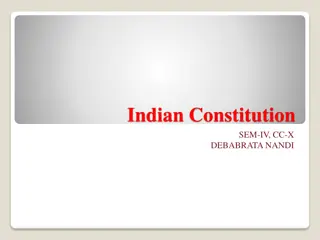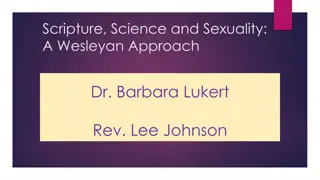Impact of Changing Communication Technologies on Cross-Cultural Interaction and Globalisation
The impact of changing communication technologies on cross-cultural interaction is evident in events like the Cronulla Riots, where SMS and social media played a powerful role in inciting violence. This led to a closer examination of how technology influences identity, power, and authority dynamics
1 views • 7 slides
Methods of Punishment in Welsh History: Impact and Reflection
Explore the historical developments in crime and punishment in Wales from the 1500s to the present day, focusing on methods of punishment and key figures such as John Howard, Dic Penderyn, Chartist leaders, and the Rebecca Riots. Delve into the impact of John Howard's campaign, the circumstances sur
0 views • 11 slides
Exploring LGBTQ+ History Through Notable Figures and Events
Learn about key figures and events in LGBTQ+ history, such as Bayard Rustin's role in organizing the March on Washington and Sappho's poetry about women loving women. Discover the activism and writings of individuals like the butch lesbian who wrote "Stone Butch Blues" and the famous writer who penn
0 views • 30 slides
Understanding Collective Behaviour and Social Movements: Theories and Examples
Collective behaviour involves voluntary and often spontaneous actions by a large group of people that defy societal norms, with examples ranging from panics and mobs to celebrations and riots. Conditions such as timing, social control breakdown, and structural strains can trigger collective behaviou
0 views • 26 slides
Riots and Public Executions in Early Modern England: A Case Study of Popular Politics (1500-1700)
The case study explores popular politics in early modern England, focusing on riots and public executions. Ordinary people play a significant role in political processes, as seen in events like the Oxfordshire Rising of 1596. The rebellion, led by Bartholomew Steer, highlights issues such as high pr
2 views • 11 slides
Evolution of the Indian Constitution: A Historic Journey
With 395 articles and 12 schedules, the Indian Constitution, effective since January 1950, is one of the world's longest. Framed over three years from December 1946 to December 1949, the Constituent Assembly painstakingly discussed and refined drafts clause by clause. The history of the Constitution
0 views • 16 slides
Challenges and Solutions in Consumer Protection within Monopoly Environments
Consumer protection in the context of monopoly environments presents unique challenges and requires specific actions. Professor Stephen Littlechild highlights the importance of competition as the most effective means of protecting consumers. In situations where there is a single supplier, such as in
0 views • 9 slides
The Civil War: Causes, Advantages, and Impact
The American Civil War was ignited by South Carolina's secession in 1860, leading to conflict over slavery and states' rights. President Lincoln fought to preserve the Union, not abolish slavery. The war saw economic developments like the Homestead Act and Morrill Land Grant, along with increased ta
0 views • 11 slides
Celebrating Equality and Diversity in Pride Month 2020
June is Pride Month, marked by events celebrating LGBTQ+ rights and diversity, rooted in the historic Stonewall riots of 1969. Embracing equality, dignity, and respect for all, it's a time to reflect, support, and advocate for the LGBTQ+ community. Understanding the importance of unity and allyship,
0 views • 9 slides
Understanding the Wesleyan Approach to Scripture, Science, and Sexuality
Delve into the Wesleyan perspective on scripture, science, and sexuality, exploring the approval of the Traditional Plan at the Saint Louis General Conference and the historical significance of the Stonewall Riots in 1969. Discover how an unusual coalition shaped decisions and sparked change in atti
0 views • 27 slides
Impact of Partition on India and Palestine
The partition of India and Palestine had significant consequences, including mass movements of people, chaos, riots, and violence. The partition resulted in the creation of India and Pakistan, leading to the migration of millions of Muslims to West Punjab in Pakistan and Hindus/Sikhs to East Punjab
0 views • 12 slides










